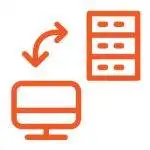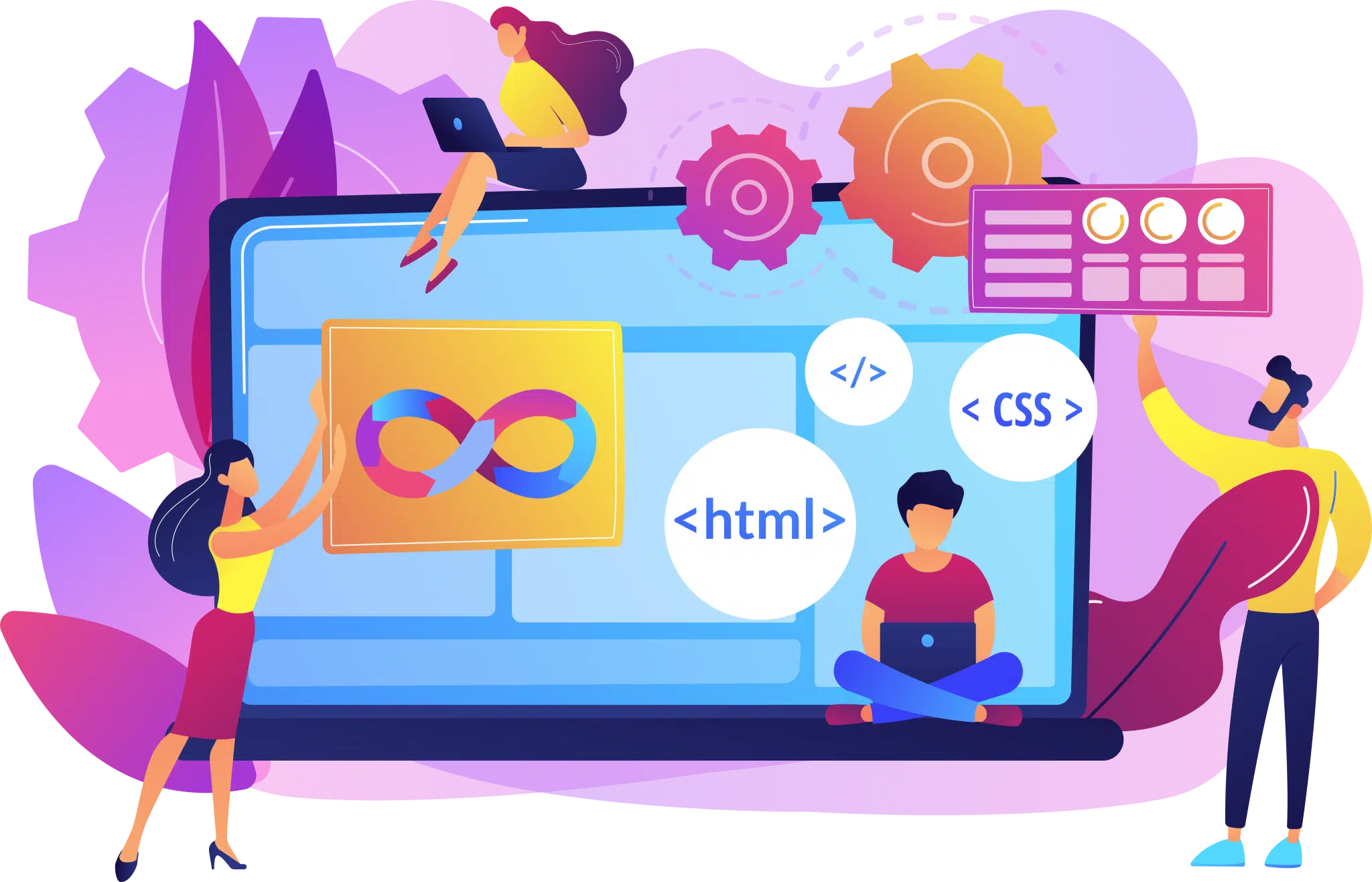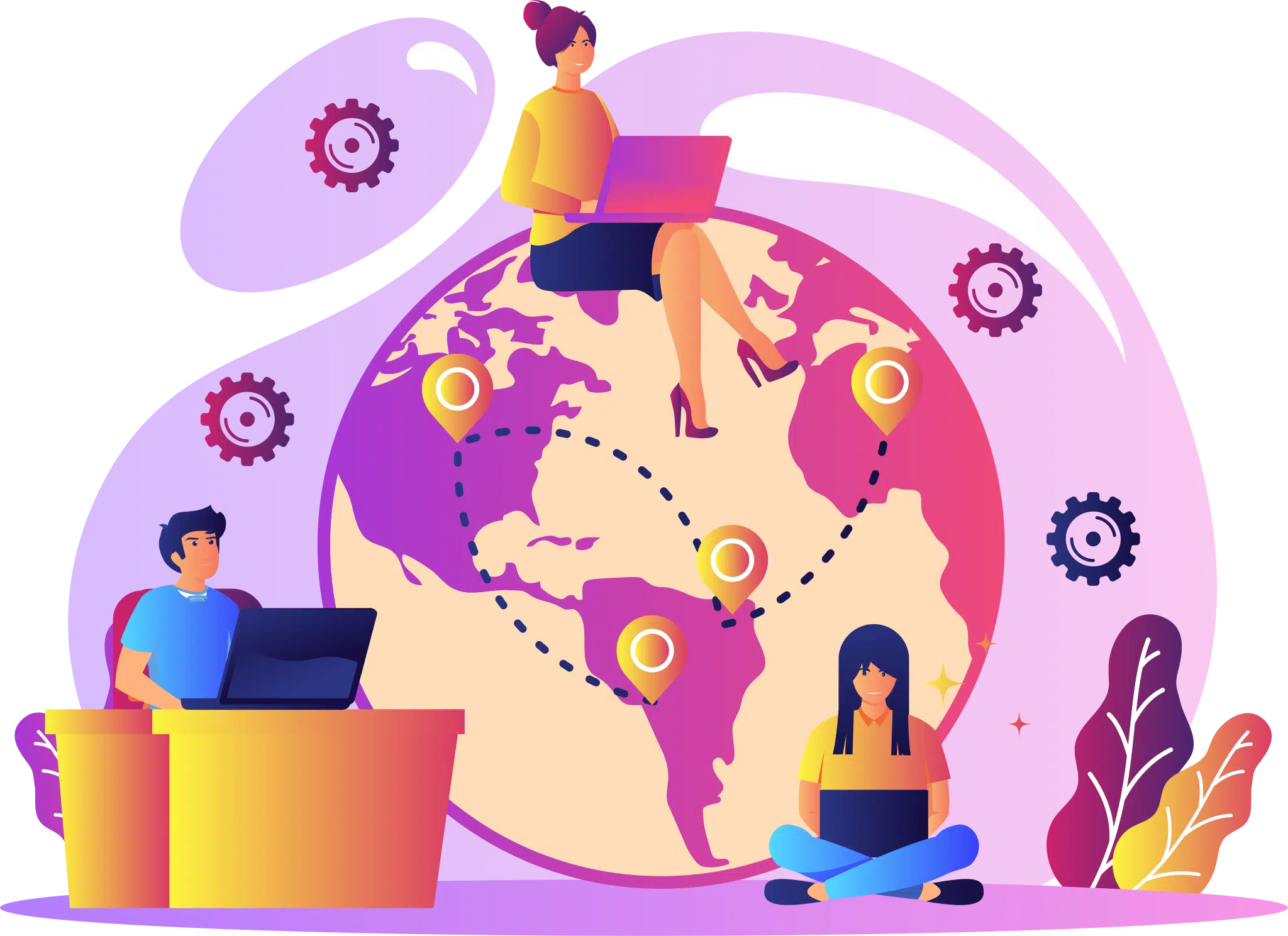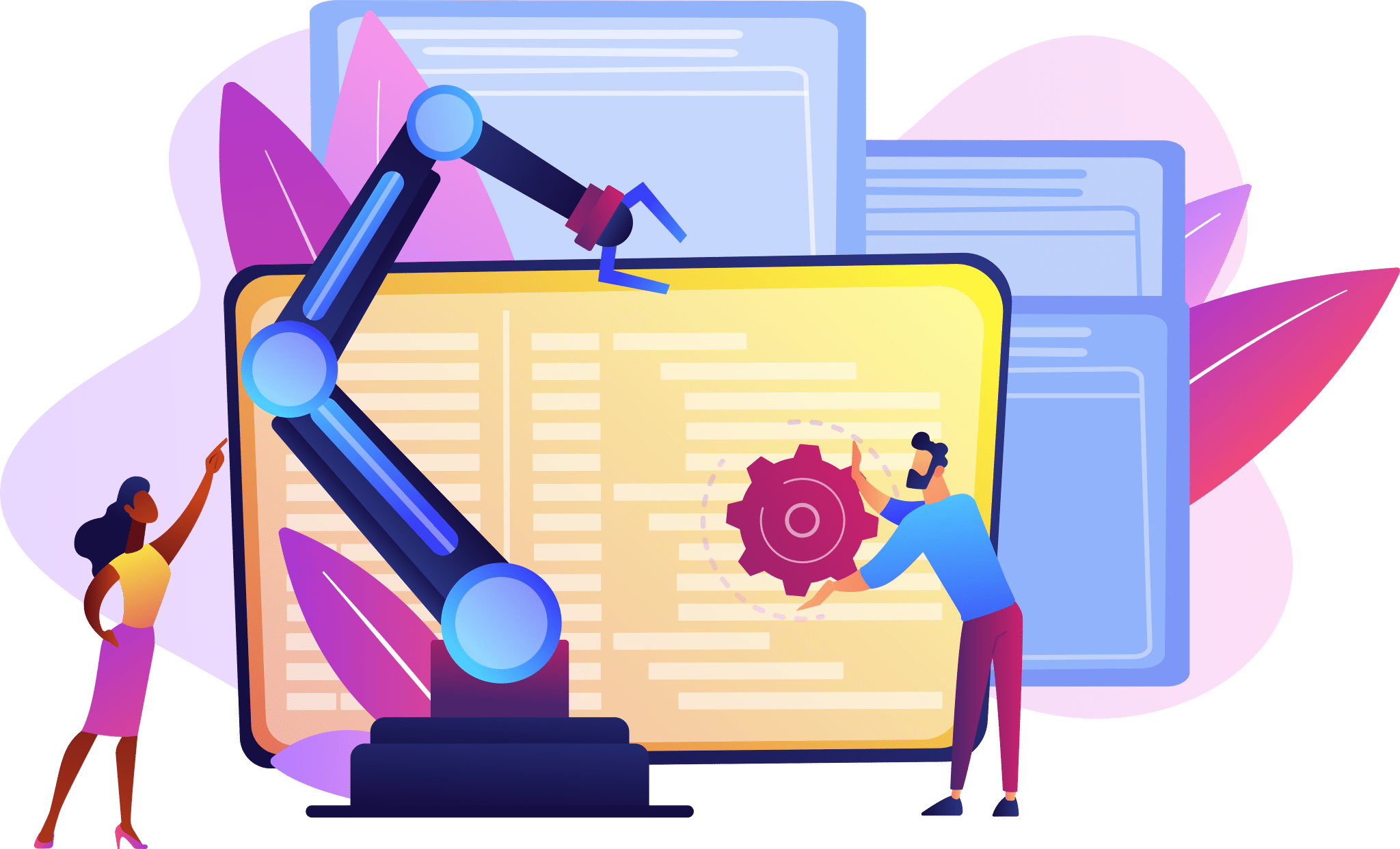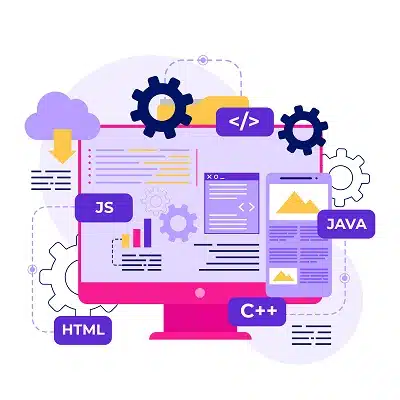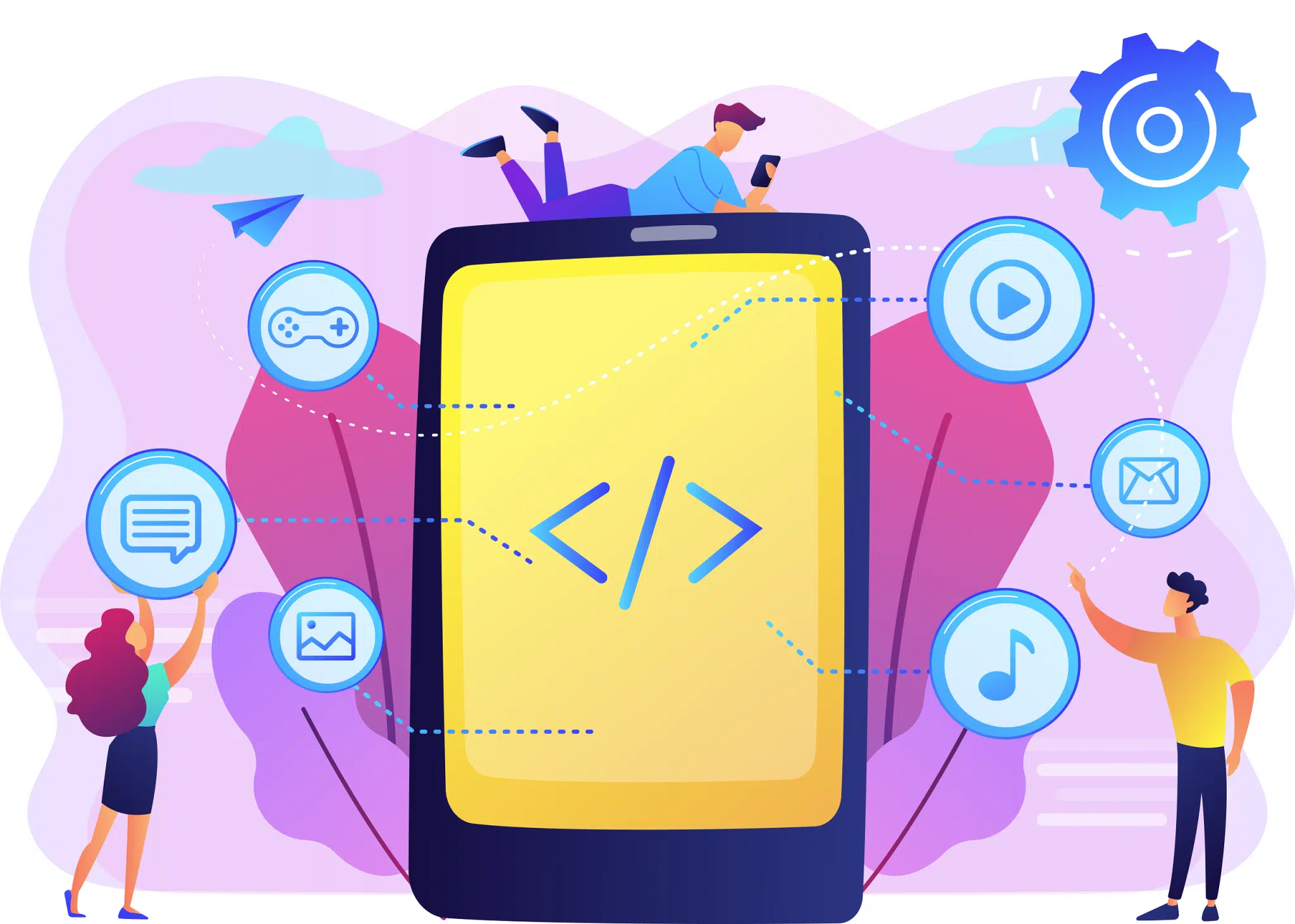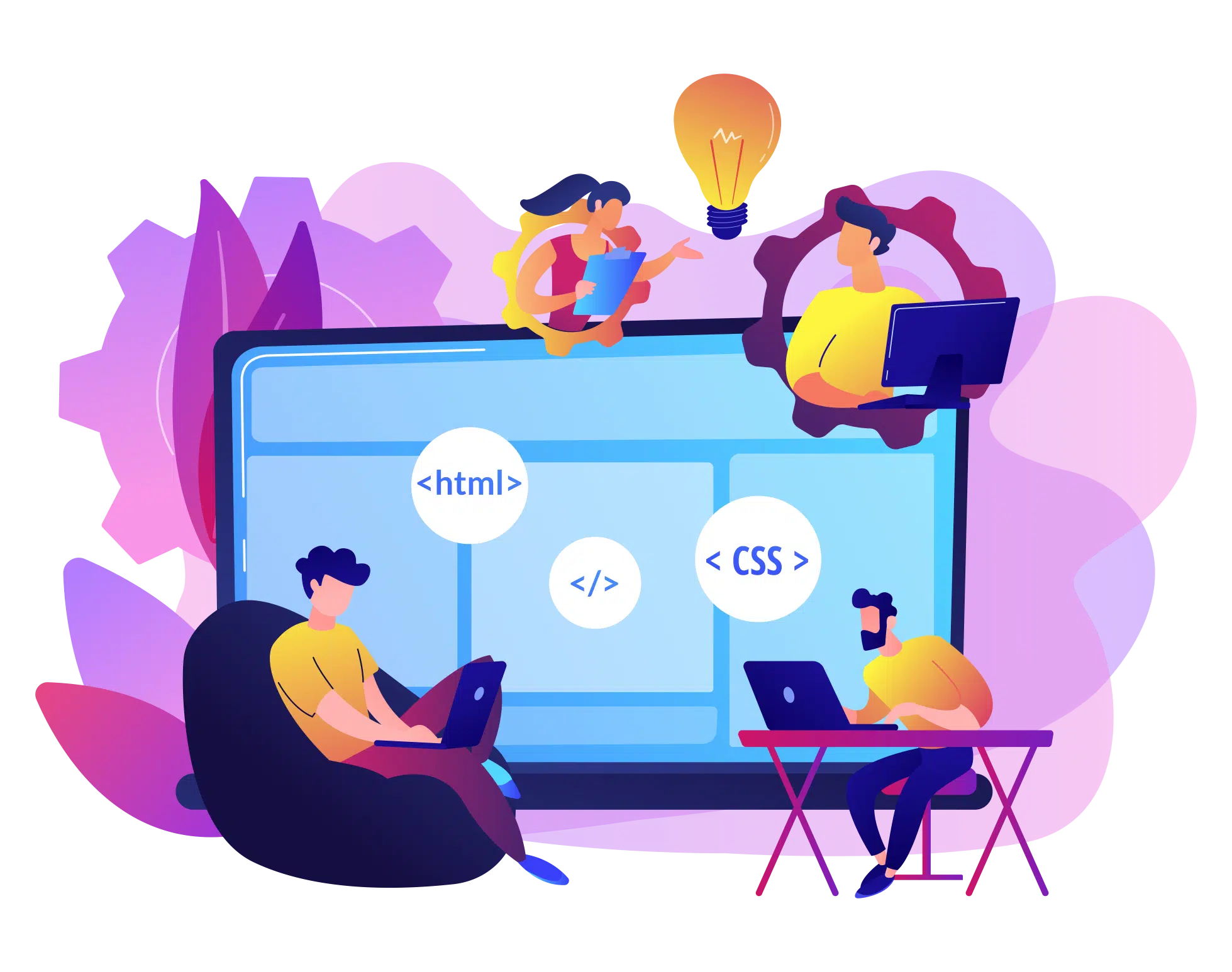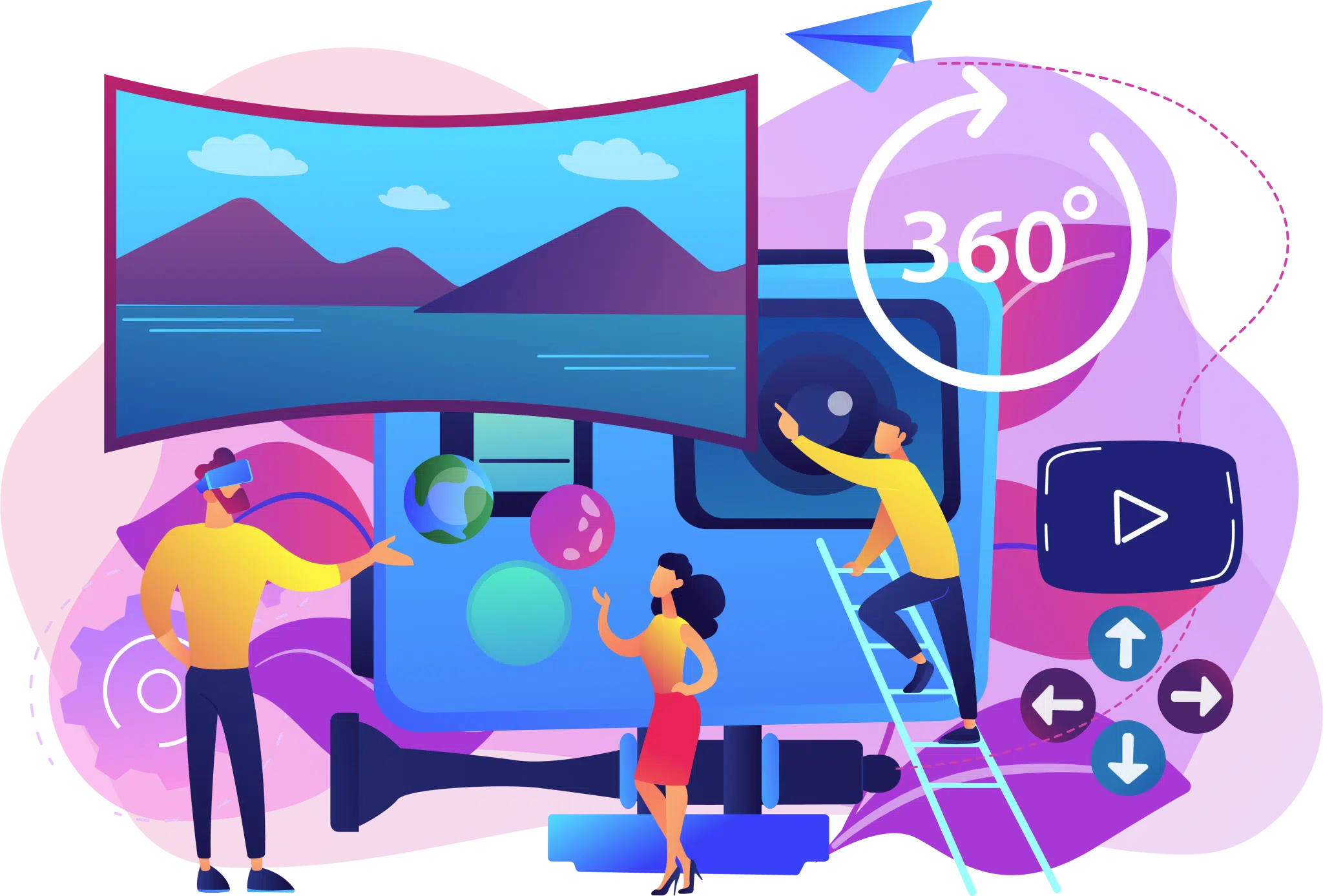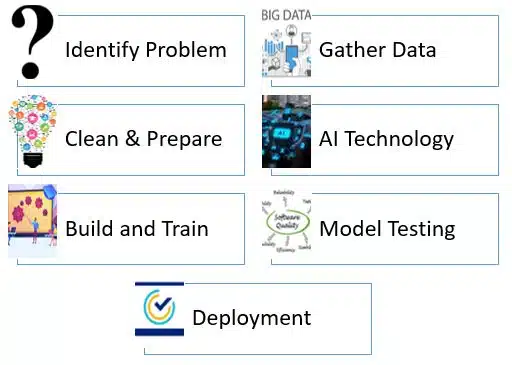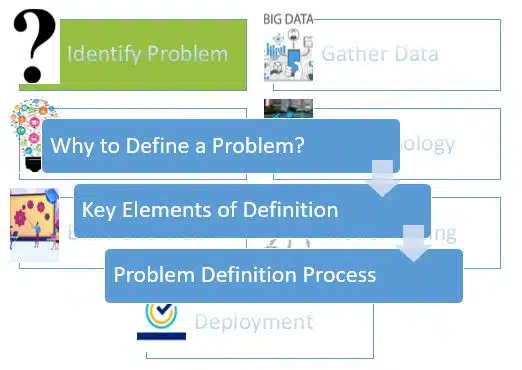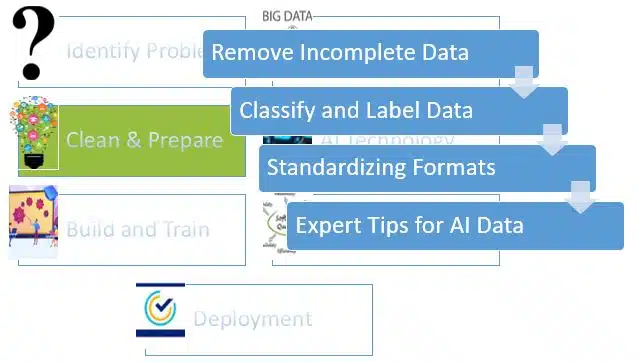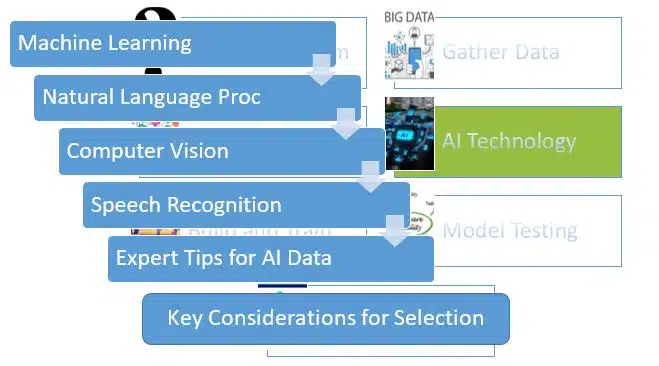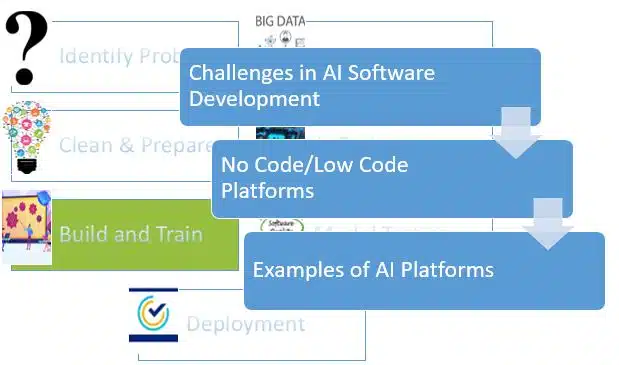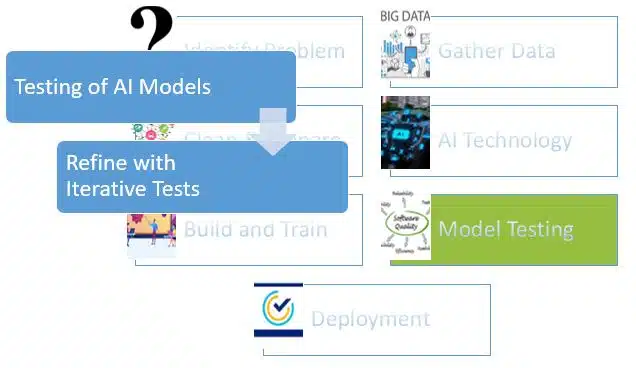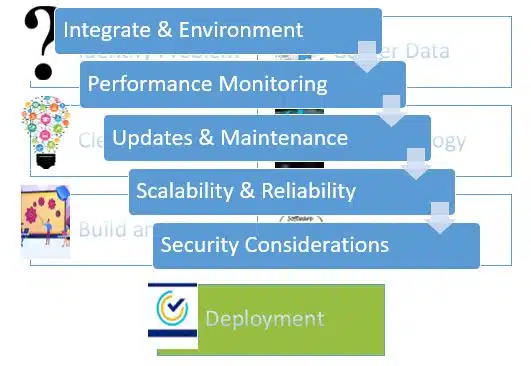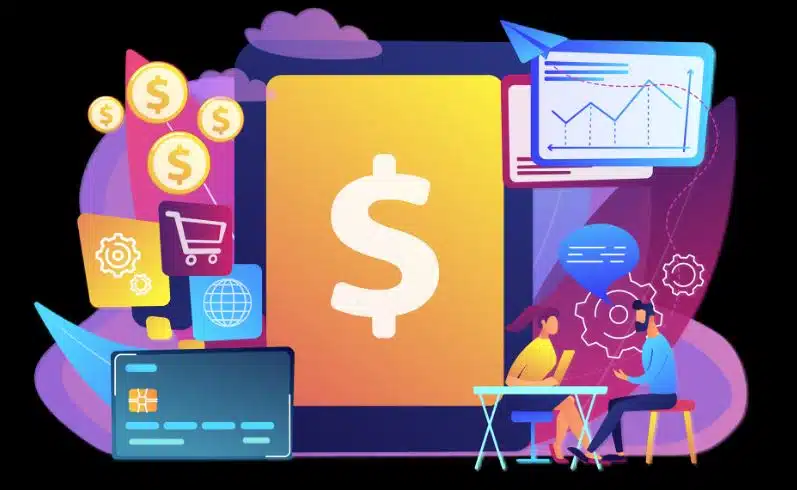Guess what? Over 73% of companies that adopted AI early have already doubled their revenue streams by 2025. But here’s the real kicker, only a handful of AI development companies are actually driving this revolution. So, who’s building the smartest, boldest, most game-changing tech today? Get ready we’re diving into the top 5 AI development powerhouses of 2025. Spoiler: you’ll want these names on your radar.
Unique Software Development – The Leading Force in AI Innovation
A powerhouse AI software development company, Unique Software Development crafts enterprise-grade AI platforms that fuel innovation, efficiency, and growth. Trusted by major brands, they deliver intelligent solutions tailored for global businesses.
Their unmatched technical depth, collaborative process, and real-world outcomes set them apart among AI Development Companies worldwide.
Core AI Development Services
Unique builds secure, scalable AI systems with real-time monitoring, model tuning, and full compliance for enterprise‑level automation and insights.
Custom AI Solutions for Businesses
They create bespoke AI systems aligned with business goals. Each project begins with stakeholder workshops to define KPIs, data needs, and user roles. Their engineers then prototype rapidly, refine with feedback, and validate in real environments. Clients appreciate this close approach: one Fortune 500 logistics firm reported a 30% efficiency boost within six months. Unique’s custom solutions integrate seamlessly with ERP and CRM systems, empowering enterprises to scale intelligent operations without disruption.
Machine Learning Models & Frameworks
Unique’s ML team excels in designing robust algorithms using TensorFlow, PyTorch, and Scikit‑Learn. They specialize in ensemble methods, deep learning, and reinforcement learning for predictive and prescriptive analytics. Their frameworks support distributed training with Kubernetes clusters on cloud providers. A recent deployment cut model training time by 50% for a retail client, thanks to efficient data batching and pipeline automation. As a leading enterprise ai software development company, they ensure code quality through CI/CD, version tracking, and containerization, delivering reproducible, maintainable, and high-performance models.
NLP and Computer Vision
Their NLP division builds conversational agents, sentiment analysis, and document‑insight tools using transformer architectures like BERT and GPT‑X. On the vision front, they craft models for defect detection, image classification, and object tracking across industries. One manufacturing client reduced inspection errors by 40% after deploying their vision system. Model explainability tools help clients trust predictions. Unique integrates these capabilities into mobile, desktop, or cloud apps. As a premium AI development company, they prioritize accuracy, latency, and bias audits, producing ethical, enterprise‑ready AI for real‑time decision making.
AI for Mobile & Web Application
They embed AI smartly into consumer and business applications, chatbots, recommendation engines, augmented reality filters, and auto‑tagging features. Using React Native, Swift, Kotlin, and Node.js, they ensure smooth integration of ML models via TensorFlow Lite or ONNX runtime. A retail client saw user engagement climb by 25% after adding AI‑driven product suggestions. Their solutions include offline capabilities, data privacy compliance, and A/B testing frameworks. As a go‑to enterprise AI software development company, they focus on usability, speed, and reliability, making AI part of everyday workflows for large‑scale user bases.
How Unique Software Executes AI Projects
They balance structured planning and flexible execution to deliver AI projects on time, on budget, and with maximum impact.
Technical Discovery & Planning
Their discovery phase unites domain experts, data scientists, and engineers in collaborative workshops. They analyze data sources, define success metrics, and assess system readiness. A global healthcare client’s pilot achieved 95% diagnostic accuracy thanks to this rigor. They produce technical specifications, data maps, and architectural diagrams, aligning all stakeholders. Risk assessments include data privacy and scalability considerations. This upfront clarity helps them avoid costly rework later. As a mature AI Development Company, their planning ensures projects start strong and deliver measurable business value from day one.
Agile Development Process
They follow two‑week sprints with daily standups, sprint reviews, and retrospectives. Each milestone includes demos, allowing stakeholders to test features early. UX designers, ML engineers, and DevOps work in synergy. Code reviews, continuous integration, and automated tests maintain quality. They prioritize backlog items based on business impact. Clients see early value through minimized risk and faster feedback loops. One enterprise insurer reduced pilot timeframe by 40% thanks to their approach. As a trusted enterprise AI software development company, they strike a perfect balance between agility and governance.
Scalable Deployment & Optimization
Upon development completion, they deploy using container orchestration platforms like Kubernetes and serverless technologies. They configure auto‑scaling, model monitoring dashboards, and alerting systems. A fintech client reported 99.9% uptime after deployment into AWS and GCP environments. Post‑launch, they execute A/B tests, retrain models, and fine‑tune performance metrics. Their team also provides training sessions and documentation for internal DevOps teams. As a leading AI development company, their delivery ensures not just launch, but ongoing scalability, resilience, and cost‑efficiency for enterprise‑grade AI systems.
Real-World Industry Impact
Their AI solutions drive transformation across complex industries, delivering measurable results in critical enterprise sectors.
Healthcare
They deliver clinical decision support, disease prediction, and medical image analysis solutions, achieving 96%+ diagnostic accuracy. One hospital network reduced readmissions by 15% using their predictive models. Their AI tools comply with HIPAA and GDPR, offering audit logs and permission controls. Applications include tele‑health triage bots, drug discovery analytics, and personalized treatment recommendations. As a reputable enterprise AI software vendor, they partner with healthcare leaders, enhancing patient outcomes, reducing operational costs, and enabling proactive care at scale across hospitals and clinics.
Retail & E-commerce
They power dynamic pricing engines, demand forecasting, and personalized shopping assistants for large retail chains. Implemented AI‑driven search and recommendation features lifted conversion by 20% for a global brand. Their analytics dashboards deliver insights on customer behavior and inventory performance. End‑to‑end integrations connect to ERP, POS, and CRM systems. They also deploy computer vision for in-store analytics. As an advanced ai software development company, they help enterprises improve margins, reduce stockouts, and create seamless omnichannel experiences that appeal to tech‑savvy consumers.
Logistics & Supply Chain
They design predictive shipment routing, inventory optimization, and warehouse automation systems. One logistics provider reduced transit times by 18% and fuel usage by 12%. Their demand planning models anticipate supply disruptions with 90% accuracy, and real‑time monitoring adapts routes dynamically. Integration with IoT sensors tracks goods from production to delivery. As a top-tier AI Development Company, they enhance supply chain resilience, lower costs, and boost service levels. Their enterprise customers gain visibility and scalability in operations across global distribution networks.
Technical Strength & Tools
Their expertise spans robust tech stacks, modern frameworks, and resilient cloud architectures to support heavy-duty AI workloads.
Languages, Frameworks, and Platforms
Proficient in Python, Java, C#, and Go, with frameworks like TensorFlow, PyTorch, Spark ML, and FastAPI. They use Docker for containerization, Kubernetes for orchestration, SQL and NoSQL databases. Their tools include MLflow for experiment tracking and Airflow for pipeline orchestration. Engineers also employ GitOps and Infrastructure as Code via Terraform. Regular code audits and peer reviews uphold high quality. As a reliable enterprise AI development company, this stack enables them to tackle complex tasks, facilitate collaboration, and deliver scalable, secure AI solutions at enterprise scale.
Cloud and Big Data Integration
They integrate with AWS, Azure, and Google Cloud, leveraging services like Lambda, Sagemaker, Databricks, and BigQuery. Their data engineers build ETL pipelines using Spark or Dataflow for massive datasets. They implement lakehouse architectures for unified analytics and BI reporting. A retail client’s data latency dropped by 60% after migrating to GCP. They enable hybrid-cloud setups where needed and enforce security best practices like VPC, IAM, and encryption. As a leading ai software development company, they ensure enterprise clients can scale AI workloads securely and efficiently in multi-cloud environments.
10Pearls – Delivering Smart, Ethical AI Solutions
Tenacious focus on responsible AI makes 10Pearls a leading ai software development company that builds trust-driven AI systems for enterprise organizations. Trusted by global brands, they combine ethics with innovation to craft intelligent solutions with real impact.
Key AI Services
Their AI expertise spans bots, analytics, and CX improvements, designed for enterprise-grade performance and ethics.
Conversational AI & Automation
10Pearls creates chatbots, voice assistants, and process automation using advanced NLP tools like RASA and Dialogflow. Their solutions improve response times, streamline workflows, and reduce manual errors. A financial client reported a 35% drop in support tickets after deployment. By focusing on alignment with brand voice and compliance, they deliver intuitive AI that feels natural and intelligent.
Customer Experience Optimization
They analyze user activity, feedback, and sentiment to personalize experiences across channels. By combining behavioral analytics and targeted messaging, they increase engagement and conversion rates. A retail enterprise saw a 28% lift in online purchases after implementing their recommendation personalization engine. Their solutions integrate with CRM platforms, ensuring seamless, consistent, and engaging customer journeys.
Predictive Analytics
10Pearls builds forecasting models for sales, churn, and operations using time‑series analysis and machine learning. A subscription service reduced churn by 22% using their predictive insights. They deliver interactive dashboards and integrate with BI tools. Focus on model transparency and ROI ensures enterprise users understand insights and act with confidence in strategic decisions.
Development Approach
Their flexible, enterprise‑focused delivery balances agility with business alignment throughout each project.
Agile Execution with Business Customization
They run iterative sprints driven by stakeholder collaboration and goal-based prioritization. Cross-functional teams of UX, data science, and engineering meet weekly to adjust, test, and refine features. Internal enterprise teams appear in demo’s to provide feedback early. This adaptive method accelerates time-to-value, while ensuring solutions align with corporate standards and KPI expectations.
Industry Applications
10Pearls adapts AI solutions for demanding enterprise environments in finance, education, and health sectors.
FinTech
Their FinTech tools include fraud detection, loan approval predictors, and chat assistants for banking. A global bank achieved a 40% reduction in false positives through their deep learning models. They follow strict compliance protocols, including PSU audits and PCI DSS readiness. Their AI-enabled systems support secure, scalable operations tailored to large financial institutions.
Education
They develop platforms for adaptive learning, chat-based tutoring, and student performance analytics. One university increased student retention by 18% using their AI-powered recommendation engine. Integrating Learning Management Systems and analytics dashboards helps educators track engagement and intervene proactively. Their focus on data privacy and usability suits enterprise schools and training providers.
Healthcare
They build clinical chatbots, appointment schedulers, and disease risk predictors supporting HIPAA compliance. One provider improved appointment efficiency by 30% with automated triage bots. Their analytics tools highlight treatment adherence and patients at risk. Their AI integrates with EHR systems, empowering enterprise hospital networks to manage care operations more effectively and compassionately.
ScienceSoft – Trusted Enterprise AI Partner
ScienceSoft is a global AI Development Company delivering enterprise-grade AI and data solutions. With 35+ years of software experience, they specialize in scalable, secure, and compliant AI systems for large corporations.
AI Capabilities and Services
ScienceSoft’s solutions blend advanced data science with enterprise security and system integration to solve critical business problems.
Machine Learning & Data Modeling
They develop predictive models, clustering, and anomaly detection using Python, R, and Spark. A telecom operator reduced customer churn by 15% using their machine-learning platform. ScienceSoft follows model validation and explainability best practices to ensure transparent results. Their data modeling supports real-time scoring and BI integrations for enterprise dashboards.
Computer Vision & Deep Learning
They implement image and video processing solutions such as defect detection, facial recognition, and scene analysis. A manufacturing client improved QC accuracy by 45% using their vision solution. Their pipelines use TensorFlow, OpenCV, and GPU-accelerated compute. Designed for large enterprise systems, they emphasize scalability, explainability, and integration into MES and ERP tools.
Decision Support Systems
They build hybrid AI systems combining rule engines, ML models, and dashboards for executive decision-making. A logistics company improved route efficiency by 20% with their supply chain DSS. AI recommendations are presented with confidence scores and visual analytics. These systems integrate with internal ERPs and external data feeds to support fast, data-driven enterprise decisions.
Project Execution Strategy
They guide enterprises through each development stage with transparent processes and strong governance.
Consulting to Deployment
Their process starts with strategic assessments, feasibility studies, and AI roadmaps. They run POCs, pilot programs, and phased rollouts. A retailer accelerated time-to-market by three months through their structured guidance. They ensure compliance, documentation, and stakeholder training. Their clear milestones maintain alignment between technical delivery and business value in complex enterprise environments.
System Integration
They integrate AI solutions with existing enterprise systems, ERPs, CRMs, and legacy databases. A banking client added predictive analytics into core systems shutting down less than 2% of transactions. Their developers handle data pipelines, API orchestration, and validation. Built for reliability, their integrations are robust, secure, and easy to maintain within large IT infrastructures.
Key Industry Expertise
Their AI solutions serve enterprise sectors needing precision, regulation, and reliability, Banking, Manufacturing, and Healthcare.
Banking
They build fraud detection, risk analysis, and robo-advisors that satisfy regulatory requirements. One bank reduced risk cases by 30% using their ensemble models. Their teams follow compliance guidelines like Basel III and GDPR. AI tools are integrated via secure APIs to core banking systems, supporting scalable, accurate, and compliant operations within global financial institutions.
Manufacturing
They deliver predictive maintenance, yield optimization, and quality control systems. A heavy industry client reduced machine downtime by 25% using their analytics platform. Solutions integrate IoT sensor data, MES, and SCADA systems. They apply reinforcement learning for process tuning. Tailored for large plants, their solutions support sustainable production, cost reduction, and operational transparency.
Healthcare
They create patient-risk scoring, medical-imaging assistance, and hospital workflow automation. One institution improved ER triage by 20% using their AI tool. Their systems comply with HIPAA and ISO 27001. Integration with EHR platforms ensures smooth clinician interaction. These enterprise-grade solutions help providers improve care, reduce admin burden, and support data-driven health outcomes.
BairesDev – Scalable AI Solutions with Global Delivery
BairesDev stands as a global ai software development company, offering enterprise-grade AI engineering powered by nearshore delivery teams. Trusted across industries, their scalable approach fuels intelligent applications with speed, reliability, and quality for large-scale businesses.
AI Service Highlights
Their AI services cover analytics, custom engineering, and machine‑learning for enterprise clients seeking robust, data‑driven growth.
Predictive Analytics
BairesDev builds advanced forecasting models for sales, maintenance, and customer behavior using time‑series methods and ensemble modeling. A logistics partner saw accuracy improve by 33%, leading to cost savings. They deploy interactive dashboards and seamless BI integration. With clear data documentation and model tracking, clients gain reliable, explainable insights for strategic decisions.
AI-Driven Product Engineering
Their engineering teams embed AI in enterprise software, recommendations, chatbots, smart forms, and fraud detection modules. Using microservices architecture and APIs, they ensure smooth integration with existing systems. A SaaS provider increased feature adoption by 28% after launch. They prioritize performance and maintainability, ensuring solutions meet complex enterprise standards with minimal disruption.
Custom Machine Learning
They design bespoke ML pipelines, data cleaning, feature engineering, model training, and deployment. Their use of Kubernetes and TensorFlow facilitates scalable solutions. A manufacturing client reduced defect rates by 22% through their custom classification models. They include CI/CD, model versioning, and retraining schedules. Designed for enterprise environments, these pipelines ensure consistency, security, and reproducibility.
Development Process
Their process combines nearshore delivery with agile mindsets to accelerate enterprise AI while keeping teams closely aligned.
Nearshore Teams & Agile Delivery
BairesDev offers dedicated teams in LATAM, aligned with Eastern time zones for real‑time collaboration. They run sprint cycles with frequent demos, backlog refinement, and stakeholder input. This setup shortens feedback loops and enhances alignment. A fintech company reduced delivery time by 30% compared to offshore alternatives. Clients enjoy efficient, transparent, and scalable workflows.
Business Applications
Their AI solutions adapt to SaaS and retail environments, enabling data‑driven transformation and operational gains.
SaaS Platforms
They develop AI components for SaaS platforms, adaptive analytics, recommendation engines, and support bots. Integration with cloud services like AWS and Azure ensures resilience. A B2B SaaS provider saw user retention rise by 24% after AI feature rollout. With full testing, version control, and rollback strategies, they ensure enterprise readiness and continuous delivery.
Retail & Consumer Insights
They deliver customer segmentation, demand forecasting, and dynamic promotion optimization for enterprise retailers. One retailer reduced stock shortages by 18% using their predictive algorithms. They incorporate sentiment analysis and demographic insights to personalize offers. With integration into ERP and CRM systems, clients gain deep shopper insights and improved margins across channels.
Intellectsoft – Engineering Advanced AI for Enterprises
Intellectsoft shines as a full-stack AI Development Company creating enterprise solutions across sectors using NLP, computer vision, and IoT intelligence. Their agile delivery teams ensure solutions are scalable, compliant, and business-focused.
Specialized AI Capabilities
Intellectsoft delivers deep‑tech AI solutions, ideal for large enterprises seeking intelligent automation and data insights.
Enterprise AI Software
They build large-scale AI ecosystems, model pipelines, analytics, dashboards, and APIs. A healthcare client automated claims review, reducing cycle time by 40%. Using microservices and containerization, they ensure modularity and scalability. With strong governance, documentation, and encryption, solutions remain secure and compliant, perfect for enterprises managing sensitive data and high IT complexity.
NLP & Image Recognition
Their teams create chatbots, semantic parsing tools, and OCR systems. In parallel, they develop vision applications for inspection, facial recognition, and AR filters. A real estate client enhanced property tagging accuracy by 35%. They offer bias checks, model transparency, and smooth user experiences. Projects deploy via web, mobile, and embedded platforms with enterprise-level user support.
AI for IoT Devices
Intellectsoft engineers integrate AI with IoT sensors for edge computing, predictive maintenance, and sensor anomaly detection. A manufacturing plant detected equipment issues 15 days earlier than before. Using edge‑optimized frameworks like TensorFlow Lite, devices run offline and sync with cloud analytics. They ensure real-time processing, low latency, and resilience, ideal for large-scale industrial environments.
Development Execution
Their structured delivery ensures clarity, compliance, and alignment from discovery through enterprise deployment.
Discovery to Deployment
They begin with workshops, assessments, and prototypes to validate AI feasibility. Pilot programs follow with incremental feature releases. A retail chain rolled out AI search across stores in six weeks. Their process includes stakeholder checkpoints, requirement tracking, and governance oversight. Documentation, training, and support accompany every phase to ensure enterprise readiness and adoption.
Enterprise System Integration
They connect AI capabilities with ERPs, CRMs, data warehouses, and messaging platforms. A global transport provider integrated predictive routing into SAP workflows. Their architects design fault-tolerant APIs and secure data flows. With rigorous testing, version control, and rollback plans, integrations are stable, maintainable, and aligned with corporate IT policies and enterprise architecture standards.
Industry-Specific Implementations
Intellectsoft delivers sector-focused AI for healthcare, automotive, and logistics, ensuring compliance and operational excellence.
Healthcare
They build telehealth bots, patient risk scoring, and billing automation tools. One hospital reduced billing errors by 27%. Their systems comply with HIPAA and ISO 27001 and integrate with EHR platforms. With audit trails and secure data handling, enterprises gain reliable, efficient, and patient-friendly digital care tools.
Automotive
Their solutions include driver behavior analytics, predictive maintenance, and inventory optimization platforms. A fleet operator reported 20% lower repair costs. Systems use real-time data and edge processing for rapid alerts. Integration with dealer management systems offers maintenance scheduling and reporting. Designed for enterprise fleets, solutions are reliable, secure, and scalable.
Logistics
They build AI for shipment forecasting, route planning, and warehouse automation. A supply chain client reduced delivery time by 18%. Their systems integrate IoT sensors, maps, and TMS platforms. With real-time dashboards and alert systems, enterprises gain transparency and efficiency across global networks. Security features include data encryption and access controls.
| Company |
Core Services |
Industries Served |
Key Strengths |
Project Timeline |
| Unique Software Development |
Custom AI, NLP, ML Models, AI for Mobile/Web |
Healthcare, Retail, Logistics |
Deep customization, end-to-end execution |
3–6 months |
| 10Pearls |
Conversational AI, Predictive Analytics, Automation |
FinTech, Healthcare, Education |
Ethical AI focus, human-centered design |
4–7 months |
| ScienceSoft |
ML & Data Modeling, Decision Systems, Deep Learning |
Banking, Manufacturing, Healthcare |
Enterprise-grade systems, strong consulting & integration |
4–8 months |
| BairesDev |
Predictive AI, AI Product Engineering, ML Solutions |
SaaS, Retail, Consumer Insights |
Global delivery, nearshore teams |
5–9 months |
| Intellectsoft |
AI for IoT, NLP, Enterprise AI Systems |
Healthcare, Automotive, Logistics |
Scalable enterprise software, strong technical architecture |
5–9 months |
Conclusion
The world’s top AI Development Companies are solving real business problems with smarter, faster, and more scalable solutions. Whether it’s machine learning, predictive analytics, or AI-powered apps, these companies know how to deliver results. For any enterprise looking to grow with tech that actually works, these are the teams worth trusting. From automation to insight-driven tools, each brand brings its own edge. Choose the one that fits your goals, and watch your business take the next leap.
FAQs
What is an AI development company?
An AI development company builds smart software that learns and solves problems using data.
Who should hire an AI software development company?
Any business that wants to automate tasks, improve decisions, or offer smarter apps should hire one.
How much does custom AI software cost?
Costs vary by project, but enterprise AI solutions often start from $20,000 and go higher.
How long does it take to develop AI software?
It usually takes 3 to 6 months depending on the complexity and features.
What industries benefit most from AI development?
Healthcare, finance, retail, logistics, and education see the biggest gains from AI solutions.







